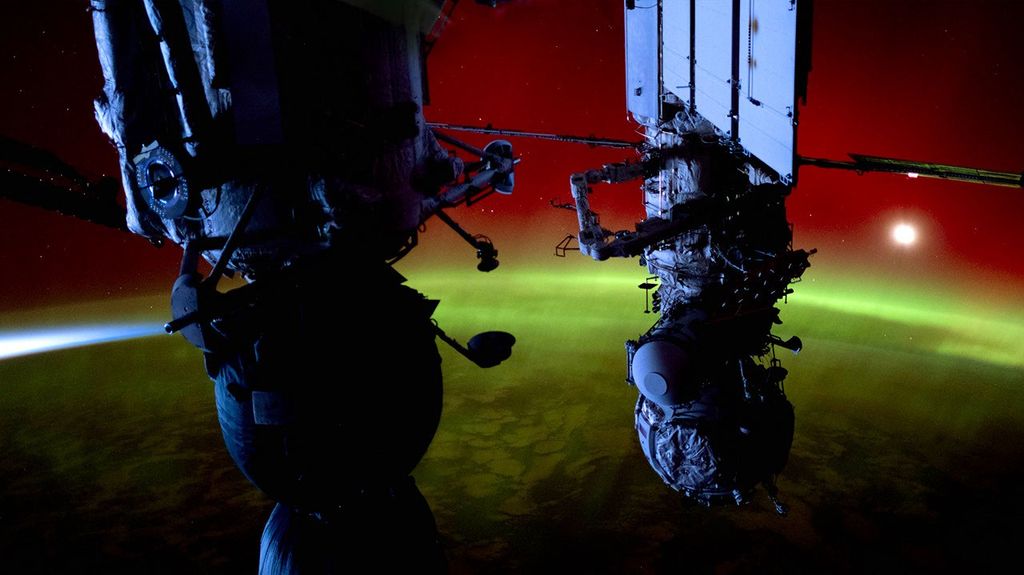NASA OSBP Mentor-Protégé Program home
Mentor-Protégé Program – Frequently Asked Questions
Q1: How many agreements may a Mentor and a Protégé have?
A: Mentor is not limited in the amount of NASA MPAs they may have at the same time. A Protégé may participate in the NASA MPP as many times as they would like. However, the Protégé may only be in one active NASA MPA at a time.
Q2: If I currently participate in another Federal agency’s MPP, may I participate in the NASA MPP at the same time?
A: The NASA MPP is completely separate from any other Federal agency’s MPP, and thus, mentors and protégés may participate in one or both at the same time, as long as the protégé has the resources to be mentored under the different programs.
Q3: How long is a mentor approved to participate in the NASA MPP?
A: A mentor approval letter is good for 6 years from the date of the letter. Six years after the date of approval, the mentor must resubmit its mentor application with the updated information and go through the approval process again.
If mentors are disbarred or suspended from Government contracts for any reason, their mentor approval is automatically withdrawn, and they may no longer participate in the NASA MPP.
Q4: Does a potential mentor need to apply by division, or is there a corporate- wide approval?
A: Mentor approval may be corporate-wide, provided that mentor applications are filled out with information at the corporate level. Once the application is submitted with corporate information and approved, all divisions of the company are eligible to participate as a mentor.
Q5: What should a mentor consider when selecting a protégé?
A: When selecting a protégé, a mentor should consider the following:
- An entity with whom a mentor has an established relationship
- An entity’s geographic proximity to the mentor
- An entity’s attitude regarding being mentored
- If assistance provided will align with the protégé’s strategic vision
- The synergy of the protégé’s and mentor’s capabilities
- Commitment to the agreement by both parties
- Stability of the protégé’s management and financial status
- The entity’s past performance
- Results of any contract/subcontract work between the mentor and protégé
- Subcontracting expectations
- An entity not currently receiving developmental assistance under an active NASA MPA
Q6: Where is the list of all NASA SBIR/STTR Phase II awardees?
A: The link to NASA SBIR/STTR Phase II companies may be found at https://sbir. nasa.gov/.
Q7: What is the Protégé application?
A: The protégé application is a separate application for potential protégé companies that details information about the company, including employee base and contracts received. However, it differs from the mentor application in that it is not submitted in advance of an agreement but is submitted concurrently with the agreement package. Any protégé applications that are submitted without a complete agreement package will not be kept on file and will have to be resubmitted with the agreement. The template for the protégé application can be found at OSBP – Protégé Application Template.
Q8: What are the submission deadlines to submit a mentor application and an MPA?
A: The NASA MPP PM accepts mentor applications at any time. Center SBSs are recommended to review and then either endorse or reject the agreements within 30 business days. The SBS will review, endorse, and forward the complete MPA package to the NASA MPP PM. Upon receipt, the PM will have 30 business days, excluding weekends and holidays, to review and approve the agreement.
Q9: What are the required documents that must be submitted with the agreement?
A: A complete MPA consists of a package containing the following documents:
- Letters of Endorsement. Signed letters of endorsement are required from the CO, the COR, and the Center SBS.
- A Mentor Cover Letter. The cover letter should outline the contents of the agreement and be signed by the mentor POC.
- A Protégé Application. The protégé application has to be developed using the template provided in Appendix A-3 of this guidebook. Please note that the protégé application should not be submitted in advance of an agreement submission.
- An MPA. Mentors will develop the MPA using the template provided in Appendix A-1 of this guidebook. The agreement must contain sufficient information on planned developmental assistance to allow NASA to evaluate the proposed development plan.
- A Technical Proposal. A detailed technical proposal that tracks easily to the cost proposal is imperative (e.g., the hours associated with each task described in the technical proposal should be visible in the cost proposal and traceable to the WBS).
- A Cost Proposal.
Q10: What is the agreement approval checklist
A: The agreement approval checklist is an internal form that is utilized by NASA to determine that all required elements are included in the agreement package. The checklist does not need to be submitted with the agreement but can be used as a reference.
Q11: What are the selection criteria for MPA approval?
A: All proposed agreements will be evaluated by the NASA Centers and NASA MPP PM based on the following criteria:
- Perceived benefit/value of the agreement to NASA
- Merit of the developmental assistance to the protégé
- Percentage of cost and hours associated with technical transfer
- Subcontracting opportunities available to the protégé
- Utilization of HBCUs/MSIs, PTACs, and SBDCs
- Proposed cost
Q12: What is the limit on the period of performance for an MPA?
A: An agreement may not exceed 36 months from the date the agreement begins.
Q13: If I previously participated in the NASA MPP prior to fiscal year 2007, will that affect my future participation?
A: No, being a prior participant from the MPP does not affect any future participation. Previous mentors are required to submit a mentor application before submitting any new agreements. Protégés are allowed to participate in the new NASA MPP as many times as they would like. Therefore, any participation does not affect future participation.
Q14: What are examples of technical transfer?
A: The developmental assistance provided under an MPA is expected to be at least 70 percent technical transfer (of proposed cost and hours), except for HBCUs/MSIs, where 30 percent may be related to technical transfer and the remaining 70 percent may be related to business infrastructure. Though this is by no means an exhaustive list, examples of technical transfer tasks may include the following:
- Engineering and Technical Assistance
- Aerospace manufacturing
- Research and development
- Accompanying Software/Information Technology.
- Tooling Design and Fabrication
- Quality Management Programs: ISO 9000, SEI/CMMI, AS9100
Q15: What do the following acronyms mean?
- Administrative Contracting Officer (ACO)
- Associate Administrator (AA)
- Award Fee Program Basic Ordering Agreement (BOA)
- Blanket Purchase Agreement (BPA)
- Contract Administration Office (CAO)
- Contracting Officer (CO)
- Contracting Officer’s Representative (COR)
- Contractor Furnished Equipment (CFE)
- Federal Acquisition Regulation (FAR)
- Government Fiscal Year (GFY)
- Historically Black College and University (HBCU)
- Historically Underutilized Business Zone (HUBZone)
- Indefinite Delivery Order (IDO)
- Individual Subcontracting Report (ISR)
- Mentor-Protégé Agreement (MPA)
- Mentor-Protégé Program (MPP)
- Marshall Space Flight Center (MSFC)
- NASA FAR Supplement (NFS)Point of Contact (POC)
- Program Manager (PM)
- North American Industry Classification System (NAICS)
- Other Direct Costs (ODCs)
- Occupational Safety and Health Administration (OSHA)
- Procurement Contracting Officer (PCO)
- Procurement Technical Assistance Centers (PTAC)
- Service-Disabled Veteran–Owned Small Business (SDVOSB)
- Small Business Development Centers (SBDC)
- Small Business Innovation Research (SBIR)
- Small Business Specialist (SBS)
- Small Business Technology Transfer (STTR)
- Technology Readiness Level (TRL)
Contact NASA MPP
For MPP applications, mentor or protégé reports or general inquiries use – hq-cal-nasaosbpenterprise@mail.nasa.gov































